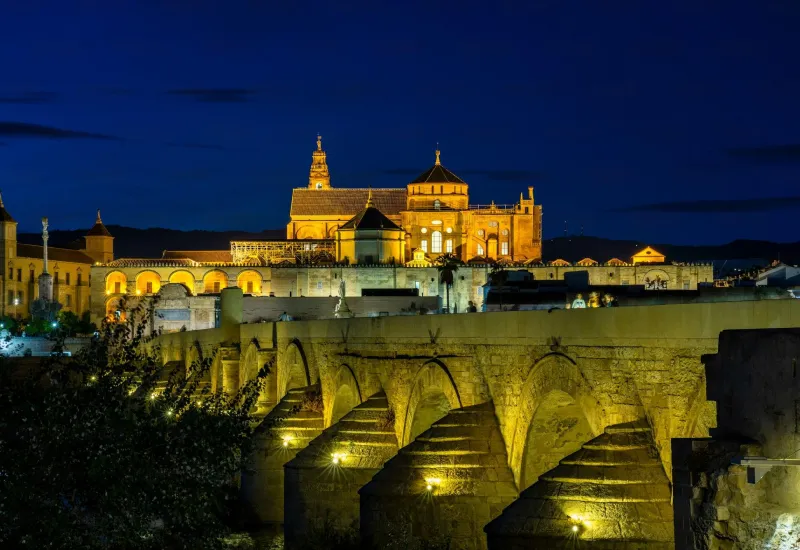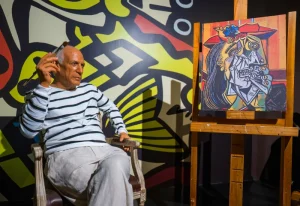The Great Mosque of Cordoba, also known as La Mezquita, is one of the most iconic architectural monuments in the world. Located in the historic city of Cordoba in Spain, it stands as a symbol of the cultural and religious fusion that took place during the Islamic rule of Al-Andalus. This 1500-word blog post will take you through the history, architectural significance, and transformation of La Mezquita while highlighting the importance of this mosque-turned-cathedral in the broader context of Islamic and Christian heritage.
Table of Contents
ToggleThe Origins of The Great Mosque of Cordoba
The origins of the Great Mosque of Cordoba date back to the 8th century, during the rule of the Umayyad dynasty in Spain. Following the conquest of the Iberian Peninsula by Muslims, the city of Córdoba became a significant cultural, political, and religious center.
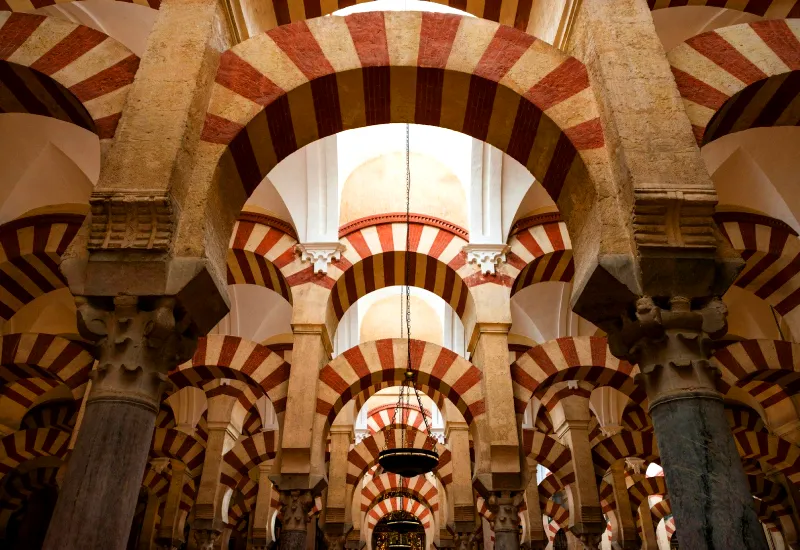
Abd al-Rahman I Cordoba, the first ruler of the independent Emirate of Córdoba, laid the foundation for the mosque in 785 AD. Over the centuries, successive rulers expanded and embellished the mosque, making it one of the largest and most significant places of worship in the Islamic world.
The Great Mosque of Cordoba History
La Mezquita underwent several expansions and modifications over the centuries, reflecting the changing political and religious landscape of the region.
The first major expansion in the Great Mosque of Cordoba architecture occurred under Abd al-Rahman II in the 9th century, followed by further expansions during the reigns of Caliphs Al-Hakam II and Al-Mansur.
Each of these rulers added their architectural flourishes, including a larger mihrab, new prayer halls, and elaborate mosaics that continue to captivate visitors today.
The mosque reached its zenith during the rule of Al-Hakam II, who transformed it into one of the most magnificent Islamic structures in the world.
The mihrab, adorned with stunning gold mosaics, is particularly noteworthy, as it highlights the artistic sophistication and craftsmanship of the era.
From Islamic Mosque to Christian cathedral in Cordoba
The most significant transformation of the Great Mosque of Cordoba took place after the Christian Reconquista of the Iberian Peninsula.
In 1236, King Ferdinand III of Castile captured Córdoba, and the mosque was converted into a Christian cathedral.

Despite its conversion, much of the original Islamic architecture was preserved, allowing La Mezquita to retain its unique blend of Islamic architecture in Spain and Christian elements.
One of the most dramatic changes to the mosque occurred in the 16th century when a Renaissance-style cathedral nave was inserted into the center of the mosque. While this addition altered the original Islamic design, it also highlighted the coexistence of two major world religions within a single building.
Today, the Great Mosque of Cordoba continues to function as a Roman Catholic cathedral, while remaining a symbol of Spain’s multicultural history.
The Architecture of La Mezquita
One of the most striking aspects of the Great Mosque of Cordoba is its unique architecture, which reflects a blend of Islamic and Christian influences.
The mosque’s layout and design exemplify the grandeur of Islamic architecture, with its vast prayer hall, intricate arches, and stunning mihrab (a niche indicating the direction of Mecca).
The prayer hall is supported by over 850 columns made from materials like marble and jasper, giving the space a forest-like appearance. The distinctive red and white horseshoe arches that adorn the columns are a defining feature of the mosque.
La Mezquita Mihrab: A Jewel of Islamic Art
One of the most important features of the Great Mosque of Cordoba is its mihrab, which stands as a stunning example of Islamic art and architecture.
The La Mezquita Mihrab was designed to indicate the qibla, or direction of prayer toward Mecca, and was lavishly decorated with intricate mosaics, calligraphy, and geometric patterns.
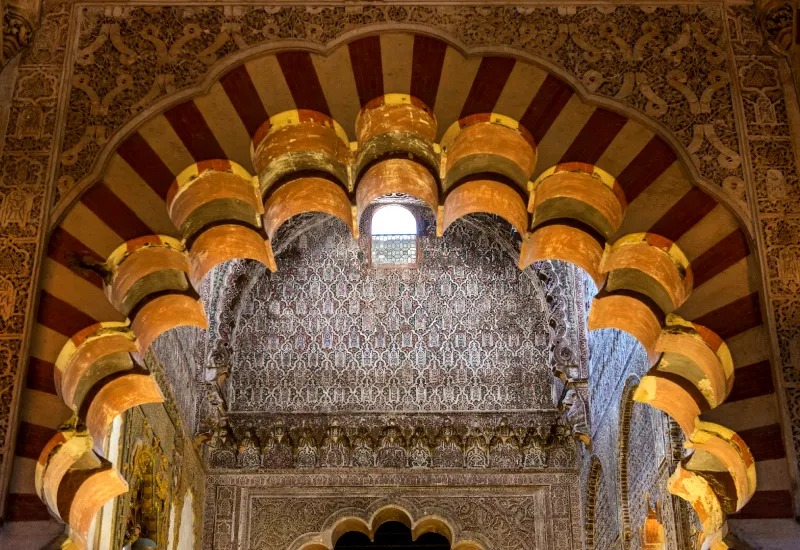
The mihrab is set in a horseshoe-shaped arch and is surrounded by detailed stone carvings and inscriptions from the Quran.
The golden mosaics that cover the mihrab were crafted by Byzantine artisans, demonstrating the cultural and artistic exchanges between the Islamic and Christian worlds. This area of the mosque is considered one of the most important and visually striking sections of La Mezquita.
The Cultural and Religious Significance of La Mezquita
The Great Mosque of Cordoba is not only an architectural masterpiece but also a symbol of the rich cultural and religious history of Spain.
During the height of the Islamic rule in Al-Andalus, Cordoba was a flourishing center of learning, culture, and religious tolerance. Muslims, Christians, and Jews coexisted in relative harmony, and the city became a beacon of intellectual and artistic achievements.
La Mezquita reflects this cultural fusion, blending elements of Islamic, Roman, Visigothic, and Christian art and architecture.
Even after the Christian reconquest, the mosque remained an important symbol of Spain’s Islamic heritage. Its preservation as a historical monument underscores its enduring significance as a testament to the shared history of different cultures and religions.
Visiting La Mezquita Today
Today, The Great Mosque of Cordoba (La Mezquita) is one of Spain’s most visited tourist attractions, drawing millions of visitors from around the world each year.
The building’s status as both a UNESCO World Heritage Site and a functioning cathedral makes it a unique destination for travelers interested in history, architecture, and religious heritage.
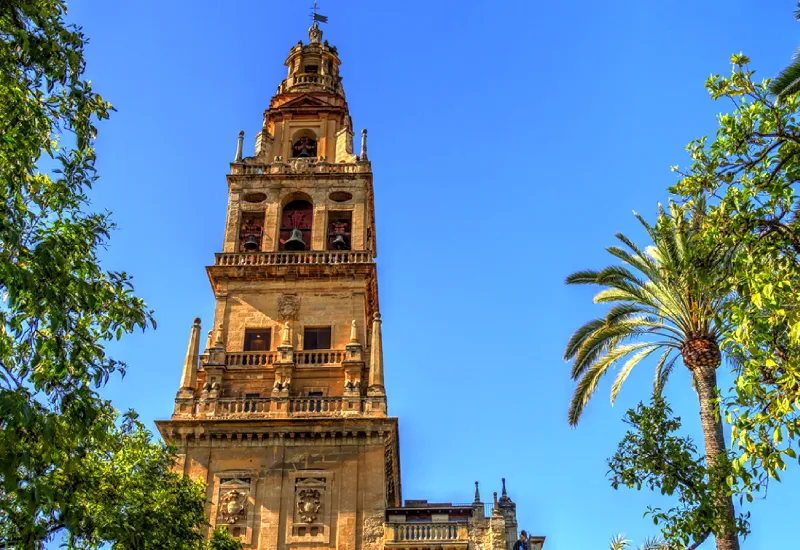
Visitors to La Mezquita can explore the expansive prayer hall, admire the intricate arches, and marvel at the beauty of the mihrab.
The juxtaposition of the Islamic mosque and the Christian cathedral creates a fascinating contrast, offering insight into the complex history of the region. Guided tours are available, providing visitors with detailed information about the history, architecture, and significance of the mosque-cathedral.
La Mezquita Info:
La Mazquita Entrance Fee: General 13 Euros
Opening Hour: From 10:00 to 19:00
The Great Mosque Of Cordoba Location: Mosque-Cathedral of Córdoba, Centro, 14003 Córdoba, Spain (Location on map)
Preservation and Restoration Efforts
Over the years, significant efforts have been made to preserve and restore La Mezquita, ensuring that its architectural splendor and historical importance are maintained for future generations.
The mosque has undergone several restoration projects, particularly in areas where the original Islamic features were altered or damaged.
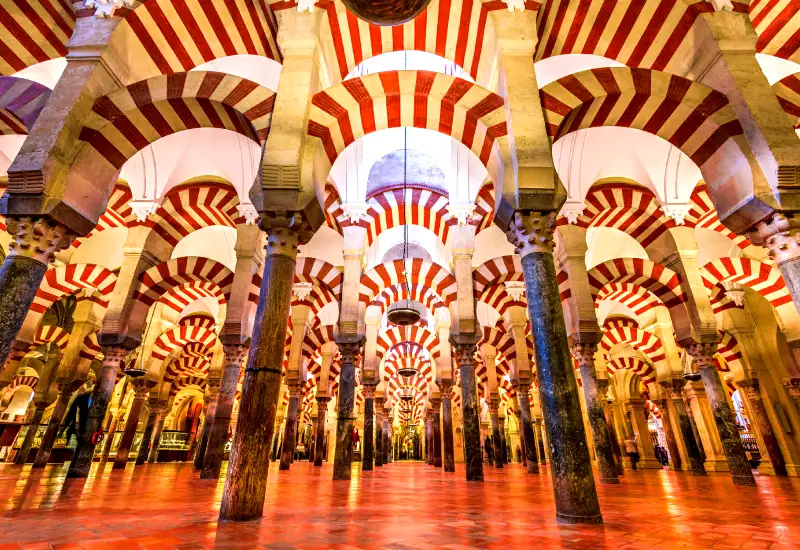
Conservationists have worked to protect the structure’s unique blend of Islamic and Christian elements, while also addressing the challenges posed by environmental factors and the passage of time.
The preservation of La Mezquita is not only important for its architectural significance but also for its role as a symbol of cultural diversity and coexistence.
By maintaining this monument, Spain continues to honor the rich legacy of its Islamic past while embracing its Christian heritage.
Conclusion
The Great Mosque of Cordoba, or La Mezquita, is a powerful symbol of the cultural and religious diversity and Islamic architecture of Europe that shaped Spain’s history.
Its architectural beauty, blending Islamic and Christian elements, serves as a reminder of the coexistence and exchange of ideas between different cultures.
La Mezquita’s transformation from a mosque to a cathedral is a testament to the region’s complex history, highlighting both the triumphs and challenges of cultural integration.
Today, La Mezquita continues to inspire awe and admiration among visitors worldwide. Its legacy as one of the most important monuments of Islamic architecture in Europe ensures its place in history as a symbol of artistic achievement, religious tolerance, and cultural fusion.

